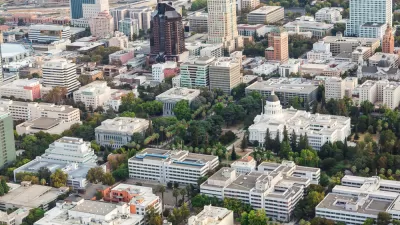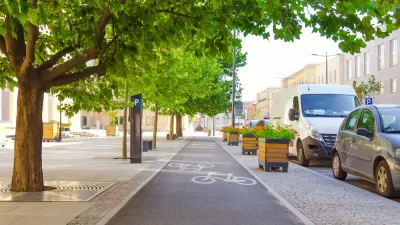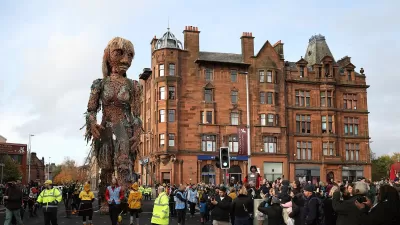Decades of poor urban planning and policy decisions have contributed to "the Glasgow Effect," which has seen higher rates of mortality for Glaswegians compared to similar de-industrialized cities.

Researchers have tied the high rates of mortality for Glaswegians under the age of 65 to decades of poor planning and policy decisions, reports Karin Goodwin of The Guardian. "The Glasgow Effect," as labelled by researchers, has seen a 30 percent higher risk of dying below the age of 65 from the typical causes of cancer and heart disease, as well as the despair diseases of alcoholism and suicide.
The cause of the higher rate of mortality among residents of Glasgow has roots in the policy and planning decisions from the '60s, '70s, and '80s that shifted portions of the population—primarily younger workers and their families—to new towns on the outskirts of the city leaving the poor and elderly in Glasgow's center in high rise housing and peripheral estates.
The schemes of modern Glasgow are often desolate and surrounded by vacant land: 91% of people in Springburn (pdf)– in the north of the city – live 500 metres from vacant or derelict land; Maryhill – in the west – it’s 85%; and in Shettleston – the east – 74%.
This could be having serious effects; earlier this year a statistical analysis of Glasgow (pdf) by Juliana Maantay and Andrew Maroko of City University of New York (CUNY), found a link between poor mental health and the proximity to vacant or derelict link. They also found the effect was lessened when communities had a role in the urban planning process.
Goodwin reports that the tide may be turning in terms of political will to fix the planning mistakes of the past, thanks to new leadership from the Scottish National Party (SNP). However, challenges remain to actually fund the change required to turn around Glasgow's high mortality rate.
FULL STORY: The Glasgow effect: 'We die young here - but you just get on with it'

Planetizen Federal Action Tracker
A weekly monitor of how Trump’s orders and actions are impacting planners and planning in America.

The Simple Legislative Tool Transforming Vacant Downtowns
In California, Michigan and Georgia, an easy win is bringing dollars — and delight — back to city centers.

San Francisco's School District Spent $105M To Build Affordable Housing for Teachers — And That's Just the Beginning
SFUSD joins a growing list of school districts using their land holdings to address housing affordability challenges faced by their own employees.

In More Metros Than You’d Think, Suburbs are Now More Expensive Than the City
If you're moving to the burbs to save on square footage, data shows you should think again.

The States Losing Rural Delivery Rooms at an Alarming Pace
In some states, as few as 9% of rural hospitals still deliver babies. As a result, rising pre-term births, no adequate pre-term care and "harrowing" close calls are a growing reality.

The Small South Asian Republic Going all in on EVs
Thanks to one simple policy change less than five years ago, 65% of new cars in this Himalayan country are now electric.
Urban Design for Planners 1: Software Tools
This six-course series explores essential urban design concepts using open source software and equips planners with the tools they need to participate fully in the urban design process.
Planning for Universal Design
Learn the tools for implementing Universal Design in planning regulations.
Smith Gee Studio
City of Charlotte
City of Camden Redevelopment Agency
City of Astoria
Transportation Research & Education Center (TREC) at Portland State University
US High Speed Rail Association
City of Camden Redevelopment Agency
Municipality of Princeton (NJ)





























